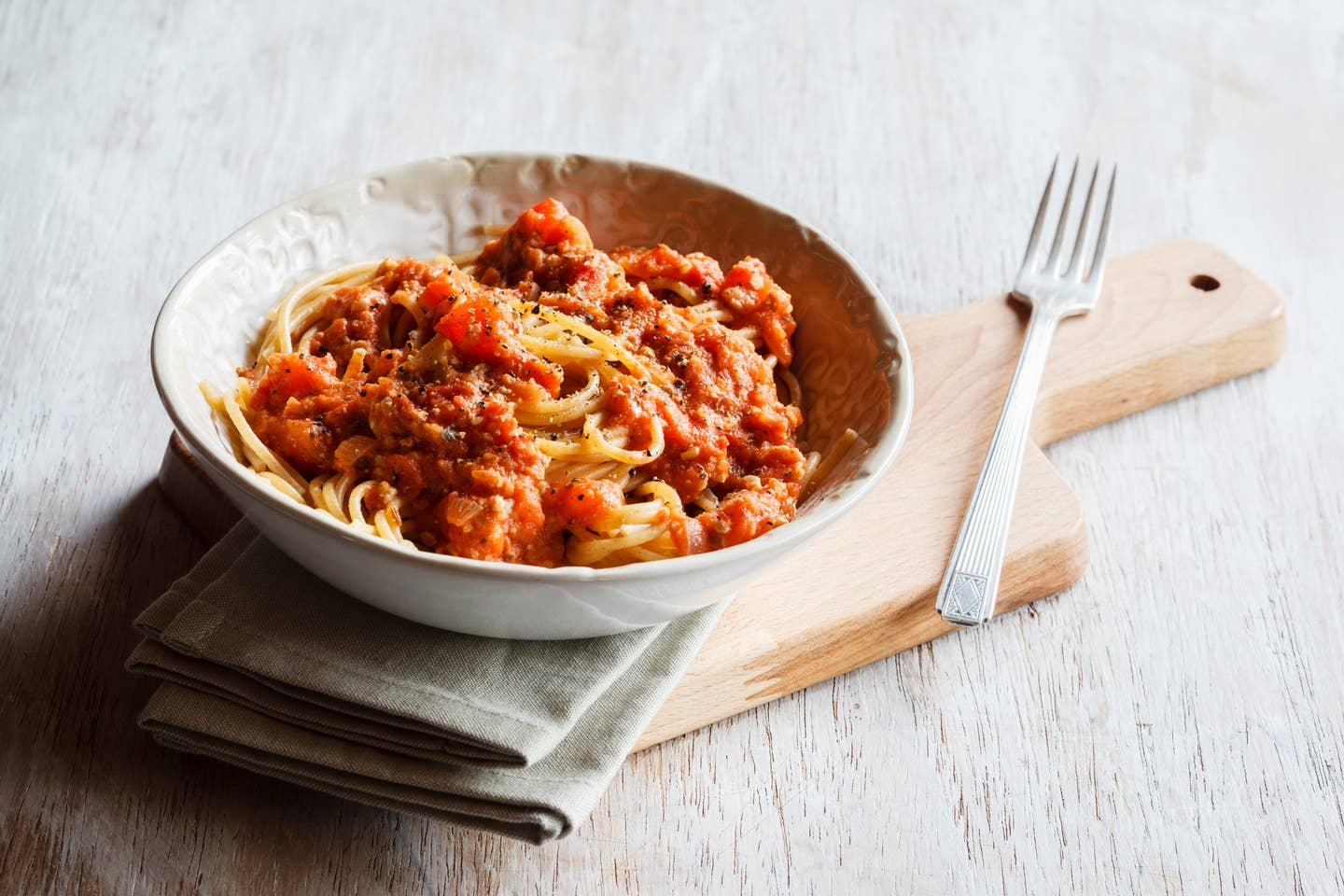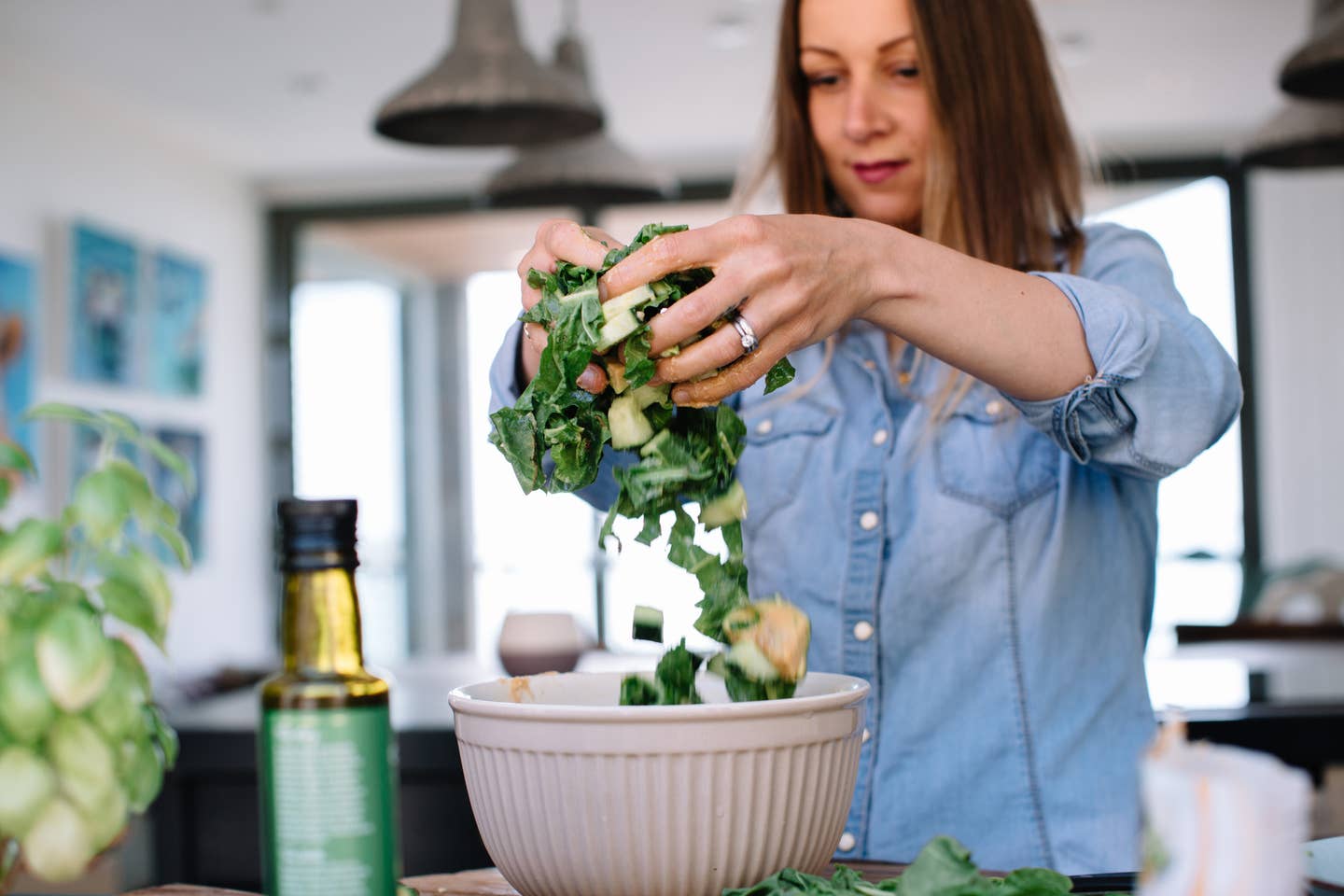
7 Ways to Eat Less Meat, to Lose Weight and Lower Your Risk of Heart Disease
You always hear about how to eat more plants. But when was the last time somebody talked to you about eating less meat? Granted, moving to a 100 percent whole-food plant-based diet is optimal for your health, and according to the work of Dr. Dean Ornish and other leading heart doctors, the only diet that’s been shown to not only prevent but actually reverse heart disease is a whole-food plant-based diet.
Studies have linked the saturated fat in red meat to heart disease: The fat causes buildup of plaque in your blood vessels which restricts oxygen and nutrients from getting from your heart to the rest of your body—organs, brain, lungs–which is the onset of heart disease.
Studies have also linked plant-based diets, which are higher in fiber, to lowering or controlling blood sugar, which leads to weight loss and the reversal of high blood sugar, as well as pre-diabetes and diabetes in patients who ditch meat and add more fiber-filled vegetables, fruits, nuts and seeds to their diets.
One study found that people who cut out meat lost 4.5 pounds more than people who didn’t, over an 18 week period. Dieters who go vegetarian not only lose weight more effectively than those on low-calorie diets but also improve their metabolism by reducing muscle fat, the study found.
However, if you’ve grown up thinking that eating animals isn’t only normal but necessary, that kind of wholesale change to eating zero meat can be hard. Yet it’s possible, and with the strategies experts outline below, you can learn how to eat less meat.
1. Start with what you know: Eat your favorite foods, only plant-based
Start by thinking of your favorite foods. “Most of them will already have a meatless alternative,” says Amy Longard, plant-based chef and registered holistic nutritionist in Ottawa, Ontario. For instance, if you like burritos, swap out the chicken for pinto or refried beans, and skip the sour cream or cheese but add extra guacamole. Even if you like pizza and burgers, the same thing applies: “All of these foods are now available in tasty vegetarian versions and are widely available at restaurants, fast food chains, and well-stocked grocery stores,” she adds.
2. Use alternative meats: Burgers, Nuggets, Crumbles, and Sausage in vegan versions
While not ideal for the long-term, these meat alternatives provide a great "bridge" as you transition to a more plant-centric diet. “Although it’s best not to do this as a long-term strategy, there’s nothing wrong with using these products as an initial step,” says Leslie Elder, M.D., internal medicine physician in Portland, Ore. Fortunately, no matter where you shop or where you live, you can always find plant-based meat alternatives. Even grocery store chains like Kroger are rolling out their own versions.
3. Think of meat as a side, not an entrée: Fill your plate with veggies and whole grains
Most Americans plate their meals with meat as the focus, which means they’re eating bigger portions of meat than even some organizations say is okay. As a result, you consume more saturated fat, cholesterol and other unhealthy things. Instead, to help make this transition easier, think of your meat as a side and not the entrée. “This can be as satisfying as having a larger amount of meat,” Elder says. Plus, with less meat, you’ll have more room for other things like vegetables, fruit and legumes, and whole grains, or favorites like rice and beans.
4. Spice up your meals: Taste the seasoning you love, not just what's under it
When was the last time you pulled over and took a bite out of roadkill? Wouldn’t ever consider doing it? Yet chew on this: That meat you’re eating is little more than the flesh of a dead animal but because it’s been heavily seasoned and/or sauced, your tastebuds are turned on. As Elder says, “Most people consider the ketchup or barbecue sauce to be more important than the burger.” Think of bacon, for instance. If it were served to you as a slab of plain meat and not smoked or salted, you probably wouldn’t like it. The upshot? Add spices and sauces to the plant-based foods you’re trying, and you may be surprised how much you like them.
5. Adopt Meatless Monday: Or Meatless-Taco Tuesday, or Vegan Wednesday ....
This global movement, which got its start in the United States during World War II, and then picked up by Sir Paul McCartney and given a cultural boost as "Meat Free Monday" in honor of his late wife, Linda, encourages people to go meatless every Monday. Try it. Who knows? You might feel so great as a result that you start moving to other days of the week. Have fun with Meatless Taco Tuesdays, trying Impossible versus Beyond or try Gardein versus Dr. Praeger's options, and do a blind taste test with the family. They may be surprised and ask, which one is the meat? You can answer, None of them!
6. Limit meat to lunch only: Better to eat a light, plant-based supper, before bed
If you’re following the standard American diet, you’re probably eating animal products with every meal: Eggs and sausage for breakfast, a chicken sandwich or salad for lunch, and a burger at night. Yet by limiting animal foods to lunch alone, you’re a step closer to going meatless, and you gain a digestive edge. “Meats are heavy foods, and your digestion is naturally strongest in the middle of the day,” Elder says. In other words, if you are eating meat, you’ll do a better job of processing and assimilating it at noon. Of course, this doesn’t negate the health consequences of eating meat but try this tactic and you’ll at least be eating less. This could even inspire you to take the meat out of lunches down the road.
7. Sub plants for half the meat: Make that burger with mushrooms, beans, lentils
If you’re cooking meat-based dishes at home, replace half of the meat in your dish with mushrooms or beans, which in a pasta sauce or burger will add taste, fiber, and nutrients. Studies show that you’ll be just as satisfied as if you used 100 percent meat, and it’s yet another way to push the meat out of your diet.
The more plant-based foods you eat, the better for your heart, your weight, and your overall health. For more ways to add plants to your diet, for heart health, weight loss, and the environment, check out The Beet's hundreds of recipes here.
More From The Beet






